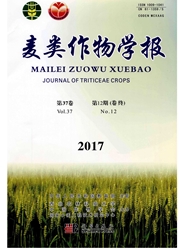

 中文摘要:
中文摘要:
为探索冬小麦种植面积的多源遥感提取方法,以江苏省中部宝应、高邮和兴化三市为研究区域,对冬小麦拔节期Land/TM和ERS/SAR遥感影像进行数据融合,基于波段最佳指数和地物光谱可分性,选择3-4-5波段进行分类,针对传统的基于像素分类方法结果易受"同物异谱"和"异物同谱"现象影响的问题,采用面向对象分类方法,以影像对象为处理单元,结合地物丰富的空间、纹理信息进行小麦面积提取,并与基于像素分类方法(SVM分类)结果进行了比较。结果表明,面向对象分类精度达到了94.16%,较准确地提取出研究区内冬小麦种植面积,比SVM分类结果具有明显优势。该方法可为南方冬小麦种植面积信息的快速获取提供技术支持。
 英文摘要:
英文摘要:
Multi-spectral remote sensing image in combination with radar image are conducive to the extraction of planting area and growth monitoring of crops. This study used three cities of Baoying, Gaoyou and Xinghua in the centre of Jiangsu Province as the study area, and the LANSAT/TM image and ERS/SAR image taken at the winter wheat early jointing period were used to explore the remote sensing method for extraction of planting area of winter wheat. Based on the Optimum Index Factor (OIF) and spectral separability, 3-4-5 bands combination was selected as the best band to classify the target. Aimed at the facts that the results of traditional pixel based classification were vulnerable to "the feature in different spectrum" and "foreign feature with the spectrum", The object-oriented im- age classification approach was used in this study, which an object as a procession unit, and combined with a wealth of features in space and texture information for the extraction of wheat planting area, and the results were compared with that pixel-based classification method (SVM classification). The results indicated that the accuracy of object-oriented classification was 94.16%. This method can ac- curately extract the wheat acreage in this study and is much better than the SVM classification meth- od. This method can give a technical support for the rapid access of wheat area information in the south.
 同期刊论文项目
同期刊论文项目
 同项目期刊论文
同项目期刊论文
 期刊信息
期刊信息
